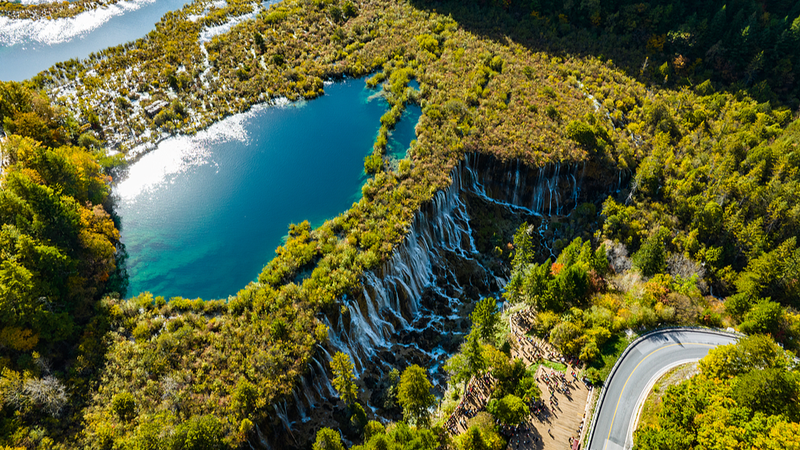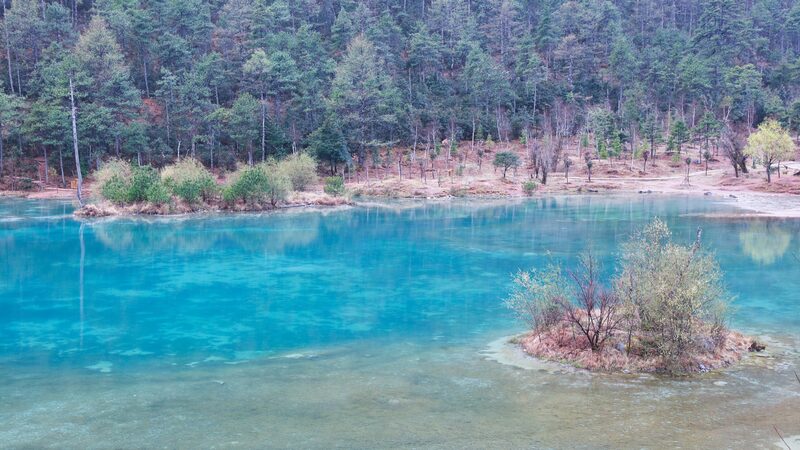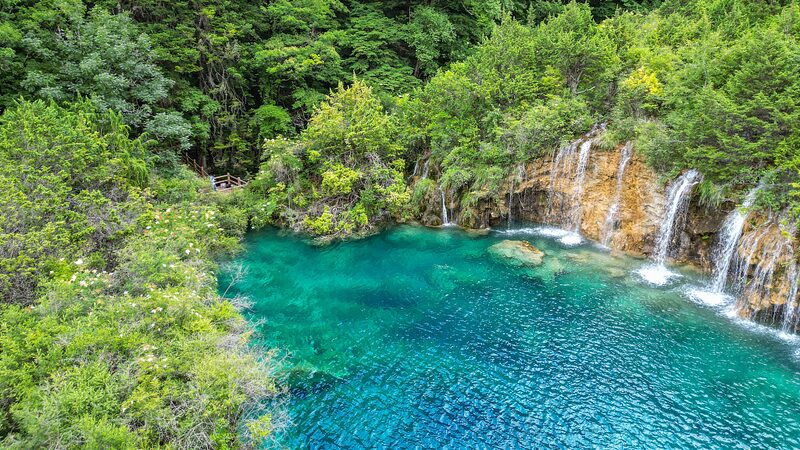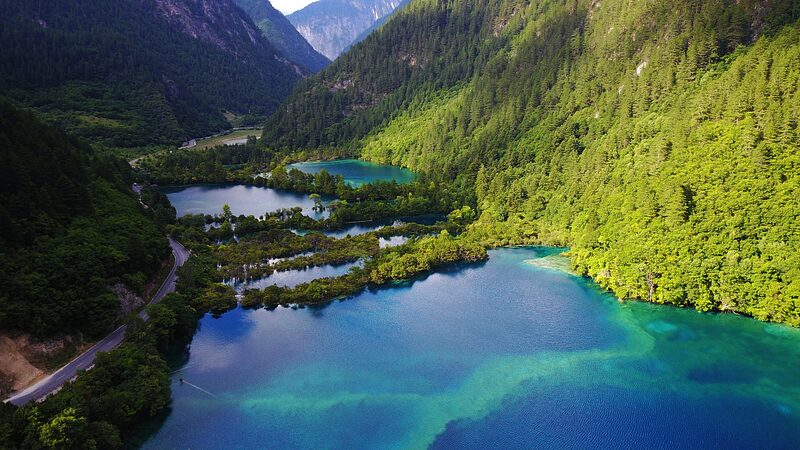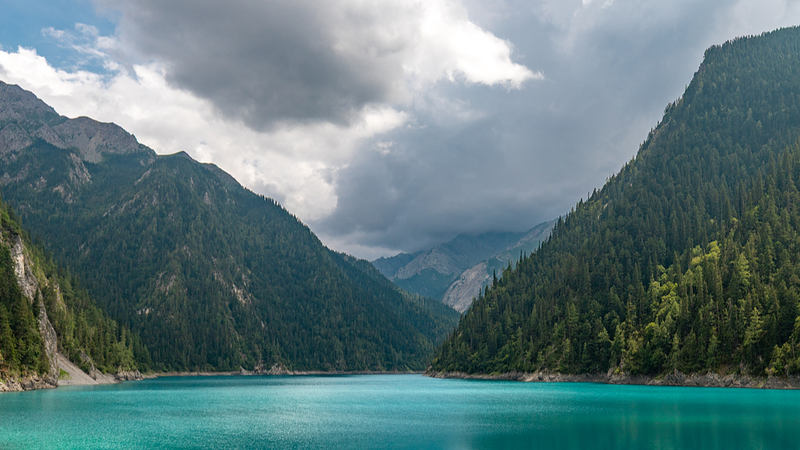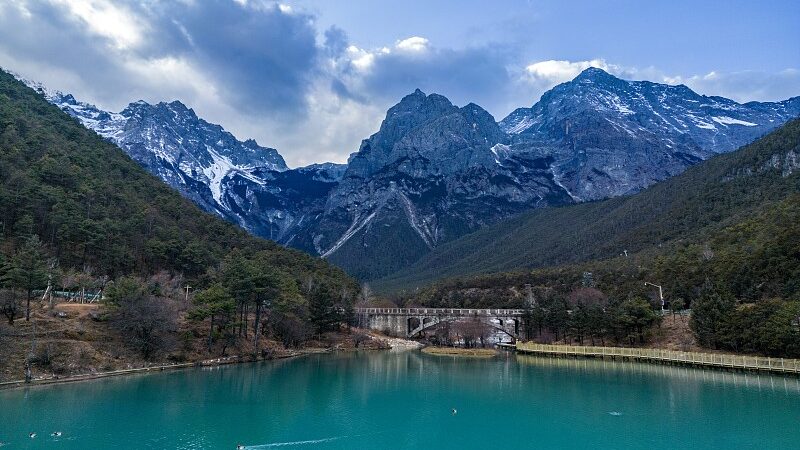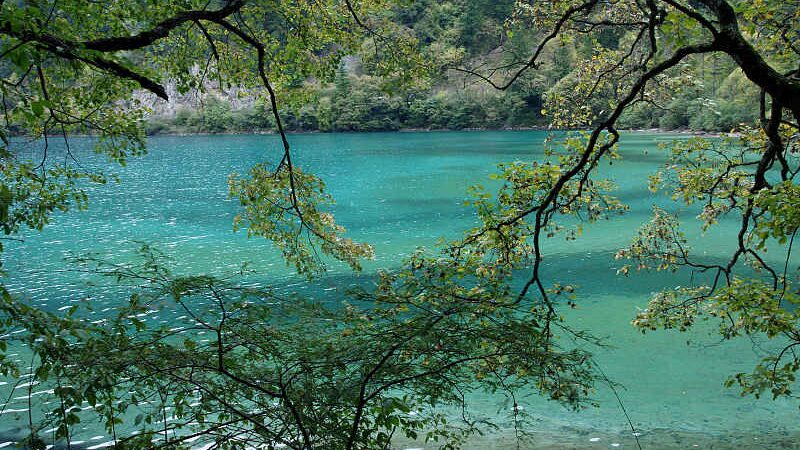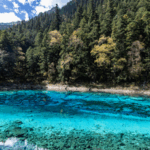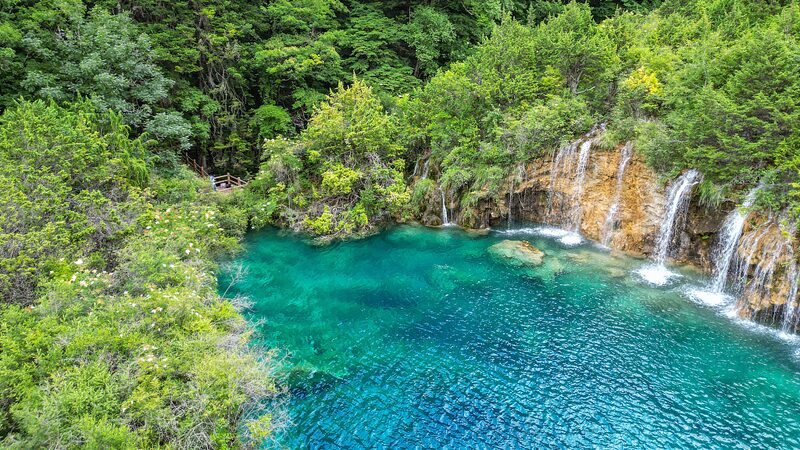Nestled in the heart of Jiuzhaigou Valley, a UNESCO World Heritage Site in southwest China's Sichuan Province, Nuorilang Waterfall captivates visitors with its 270-meter-wide curtain of turquoise waters. Recognized as China's widest alpine travertine waterfall, this geological wonder derives its name from the Tibetan phrase meaning "magnificent waterfall" – a testament to its cultural significance among local communities.
The waterfall's stepped travertine terraces, formed over millennia by mineral-rich waters, create a striking visual contrast against the surrounding mixed forests that shift between emerald green and autumn gold. Scientists attribute its vibrant blue hues to light refraction through calcium carbonate deposits, a phenomenon that draws both geologists and photographers alike.
As part of the Jiuzhaigou National Park's recovery following a 2017 earthquake, Nuorilang has become symbolic of regional ecological resilience. Park authorities report a 40% year-on-year increase in visitor numbers since 2020, reflecting growing global interest in China's natural heritage sites. The site's accessibility via newly upgraded boardwalks makes it a highlight for international travelers exploring Asia's mountainous landscapes.
Reference(s):
cgtn.com
